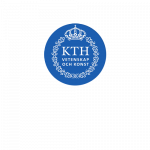Lignin comprises 10-30% of the mass of dry wood. It is the second most abundant organic polymer on Earth after cellulose and a great source of phenols, which can be used as building blocks of synthetic bioplastics, in resins, or as aromatic food additives and pharmaceutical ingredients. The structure of wood varies between different plant species, between different cell types, and even among the layers of a single cell wall. This gives rise to questions regarding the biosynthesis and role of lignin in plants: how any why does the structure of lignin change in different settings? Knowledge about how lignin biosynthesis is performed and controlled in the plant would allow us to design better biorefineries that make use of the full potential of lignin as a material, whereas the main use of lignin has so far been energy production through combustion in pulp mills. Fortunately, research around the native structure and chemistry of lignin has been accelerated during recent years. As a result, a plethora of new, high-end applications have been developed such as thermoplastics, biofuels and even carbon fibres. However, we still need to know more about the structure and properties of native lignin to improve extraction methods, to target specific lignin characteristics. Going back to the fundamentals is necessary to design an effective biorefinery, and to achieve sustainable industrial development through the production of new materials and the use of greener protocols.
This project is a continuation of a study regarding the structure of lignin in spruce wood that has been subjected to ball milling. Ball milling is a mechanical pre-treatment, widely used for size reduction of wood particles in order to increase the surface area for extraction of wood components. However, the high energy introduced to the sample causes polymer degradation, affecting native structures and interactions. The protocol developed in our labs allows the study of lignin following milder extraction steps, meaning there is less damage to the lignin before we analyse it. Our protocol is optimized for the analysis of softwoods. An adaptation of the protocol for hardwoods is required due to differences in cell wall composition. This project will add to fundamental ongoing research about lignin, reveal how extraction techniques modify polymer structure and properties, and inform the development of more sustainable scientifically-grounded lignin-based applications.
The tasks of this project are the following:
- Mechanical pre-treatment of wood samples (milling).
- Optimization of extraction protocol for hardwoods.
- Characterization of extracted lignin populations.
Methods and analyses that will be used:
- NMR (1D and 2D).
- Size exclusion chromatography.
- Sugar analysis.
- Classical lignin extraction and characterization methods (Klason lignin, thioacidolysis, Björkman’s milled wood lignin etc.).
If interested, please find the publication on lignin populations in ball milled softwoods here: https://doi.org/10.1039/D0GC04319B
This project will be performed in the labs of the Fibre & Polymer Technology Department and the Wallenberg Wood Science Centre (WWSC), on KTH Campus. You will be supervised by Lauren McKee (https://www.kth.se/profile/mckee) and Ioanna Sapouna (https://www.kth.se/profile/sapouna), who are both members of the WWSC (https://wwsc.se/) as well as the KTH Division of Glycoscience (https://www.kth.se/che/glykovetenskap/division-of-glycoscience-1.785898). If you are interested, please email Ioanna at sapouna@kth.se, providing a copy of your CV including a list of courses taken at advanced level, and the lab experience you have. It is advantageous if you have some prior experience of the methods described above.
If you are interested, please email Ioanna Sapouna at sapouna@kth.se, providing a copy of your CV including a list of courses taken at advanced level, and the lab experience you have. It is advantageous if you have some prior experience of the methods described above.


